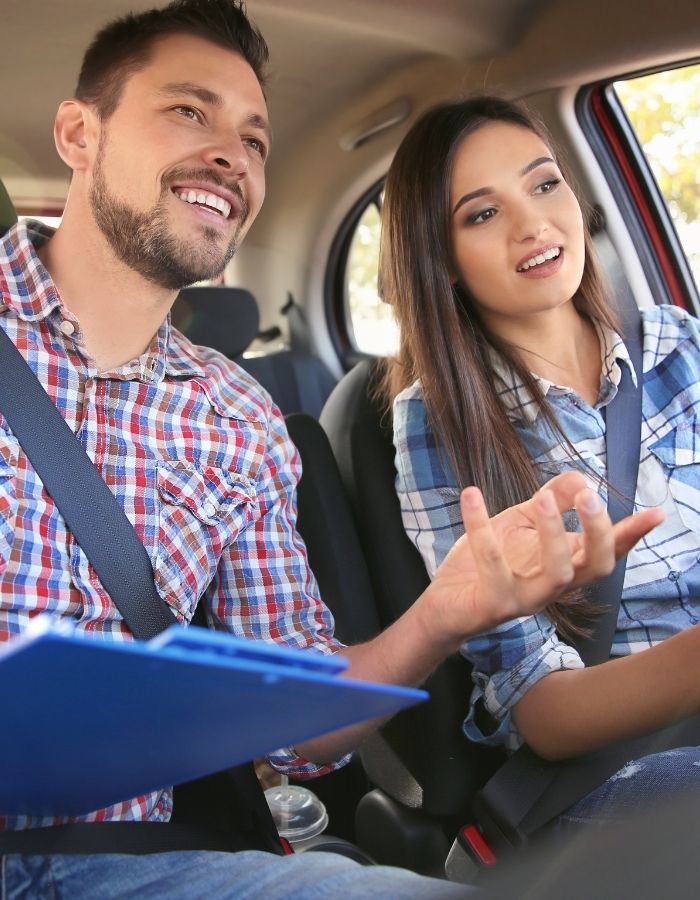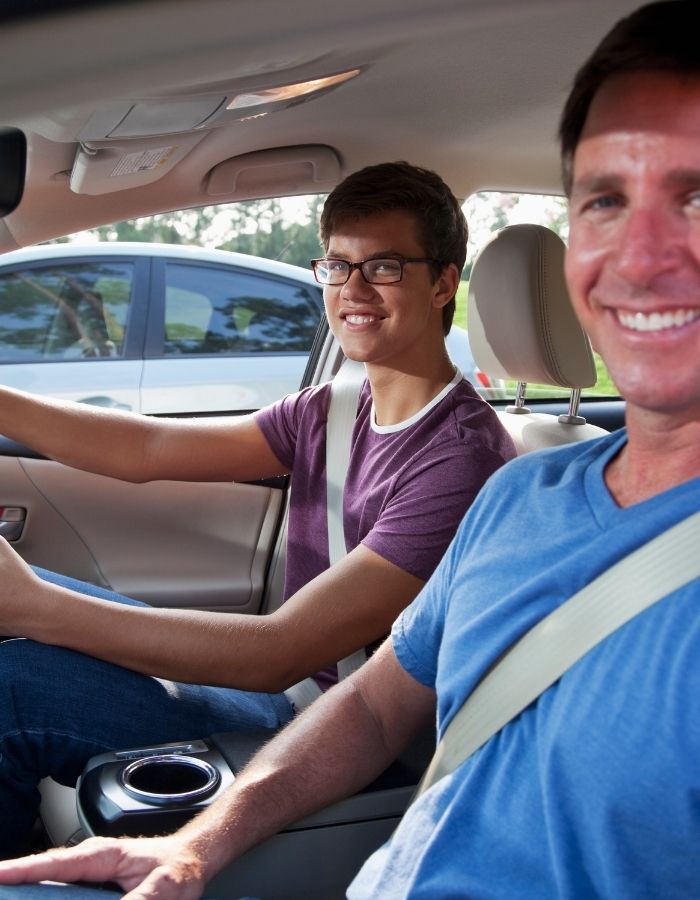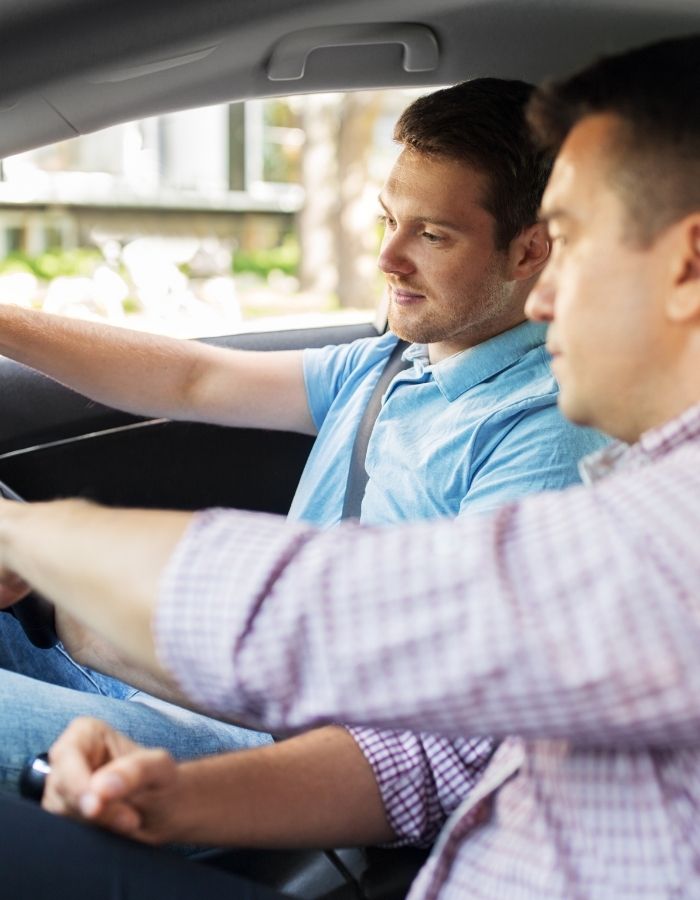
Learn to drive a car: step by step
You need a provisional driving licence to take lessons or practice.
You can start driving as soon as you pass your driving test.
You must have an insurance policy that allows you to drive without supervision.
COMPETENCIES YOU WILL NEED TO LEARN
Your driving test will cover many of the following areas if you have knowledge and experience in these areas you will pass your driving test.
DRIVING ESSENTIAL SKILLS
- The Highway Code
- Know Your Traffic Signs
- Vehicle handbook
- Other traffics
- Signals
COCKPIT CHECKS
- DSSSM
- driving position
- head restraints
- seat belts
- doors
- gears and handbrake safety check
- mirrors
- order of adjustment
- mirror adjustment, including anti-dazzle
- variety of seat adjustments
SAFETY CHECKS
- POWER (petrol - oil - water - electrics - rubber)
- daily and weekly vehicle checks
- service intervals
- planning for journeys
- clear windscreens
MOVING AWAY & STOPPING
- MSM and PSL
- observation and blind spots
- control and co-ordination
- on level and on gradient
- at angle and straight ahead
- co-ordination of accelerator, clutch and footbrake
- handbrake and steering
- where, when and what to look for
- suitable stopping places
- signals when necessary
SAFE POSITIONING
- normal driving
- lane discipline
- passing stationary vehicles and obstructions
- bends
- MSM and PSL
- other vehicle’s positioning (LGV, cyclists etc)
- wide and narrow roads
- one-way streets
MIRRORS - VISION & USE
- interior and exterior
- flat, concave and convex
- MSM and PSL
- when to use them
- why they should be used
- how to act on what is seen
- blind spots
- frequency of checks and why
ANTICIPATION & PLANNING
- risk awareness in connection with: drivers, cyclists, motorcyclists, pedestrians, animals, road works, emergency vehicles and any other road users
- MSM and PSL
- hazard perception
- visual warnings
- times and places of high risk
- weather conditions
- scanning and priorities
USE OF SPEED
- appropriate speed
- making progress
- hesitancy
- national speed limits
- restricted speed limits
- road and weather conditions
- traffic conditions
- pedestrian activity
- stopping distances
OTHER TRAFFIC
- meeting, crossing and overtaking
- one way and two way roads
- three-lane two-way roads
- major, minor and narrow roads
- dual carriageways
- MSM and PSL
- when and why to give way
- passing places and warning signs
- obstructions, parked vehicles
- planning and anticipation
- how to act on what is seen
- motorways
JUNCTIONS
- T-junctions and Y-junctions
- crossroads and slip roads
- marked and unmarked junctions
- one-way streets
- urban, rural and dual carriageways
- MSM and PSL
- turning, entering and emerging
- advance warning signs and road markings
- zones of vision
- priorities
ROUNDABOUTS
- mini and major
- multiple and satellite
- traffic light controlled
- approaching and entering
- leaving and turning
- straight ahead
- MSM and PSL
- lane discipline
- correct position
- zones of vision
- observation
- priorities
SIGNALS
- by arm and by indicators
- brake, reversing and hazard lights
- by other road users and traffic controllers
- why signals are necessary
- when and how to signal
- unnecessary signals
Course Structure

Note: The test is the same for both manual and automatic cars.
‘tell me’ question at the start of your test, before you start driving ‘show me’ question while you’re driving
Normal stops at the side of the road.
Pulling out from behind a parked vehicle.
A hill start.
You might also be asked to carry out an emergency stop.
Parallel park at the side of the road.
Park in a parking bay – either by driving in and reversing out, or reversing in and driving out (the examiner will tell you which you have to do)
Pull up on the right-hand side of the road, reverse for around 2 car lengths, and rejoin the traffic
The examiner will tell you which you have to follow.
They’ll set the sat nav up for you. You cannot use your own sat nav.
Your driving examiner will direct you back to the driving test centre if the mistake you made means you’ve failed. The test will end early.
A dangerous fault – this involves actual danger to you, the examiner, the public or property.
A serious fault – something potentially dangerous.
A driving fault – this is not potentially dangerous, but if you keep making the same fault, it could become a serious fault.
No more than 15 driving faults (sometimes called ‘minors’)
No serious or dangerous faults (sometimes called ‘majors’)
The examiner will:
tell you what faults you made, if any
Give you a pass certificate
Ask you if you want your full licence to be sent to you automatically – give the examiner your provisional licence if you want to do this
Car 'show me, tell me' vehicle safety questions
You’ll be asked 2 vehicle safety questions during your car driving test.
The examiner will ask you one:
- ‘tell me’ question (where you explain how you’d carry out a safety task) at the start of your test, before you start driving
- ‘show me’ question (where you show how you’d carry out a safety task) while you’re driving
You’ll get one driving fault (sometimes called a ‘minor’) if you get one or both questions wrong.
‘Tell me’ questions
If the steering becomes heavy, the system may not be working properly. Before starting a journey, 2 simple checks can be made.
Gentle pressure on the steering wheel, maintained while the engine is started, should result in a slight but noticeable movement as the system begins to operate. Alternatively turning the steering wheel just after moving off will give an immediate indication that the power assistance is functioning.

‘Show me’ questions
- When it’s safe to do so, can you show me how you wash and clean the rear windscreen?
- When it’s safe to do so, can you show me how you wash and clean the front windscreen?
- When it’s safe to do so, can you show me how you’d switch on your dipped headlights?
- When it’s safe to do so, can you show me how you’d set the rear demister?
- When it’s safe to do so, can you show me how you’d operate the horn?
- When it’s safe to do so, can you show me how you’d demist the front windscreen?
- When it’s safe to do so, can you show me how you’d open and close the side window?